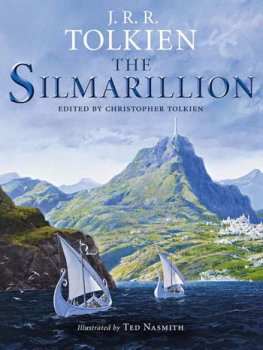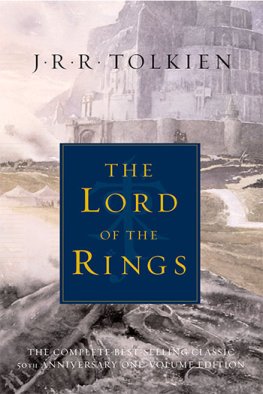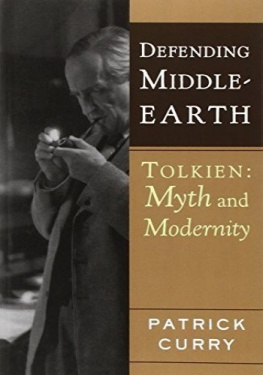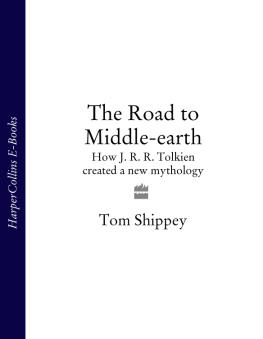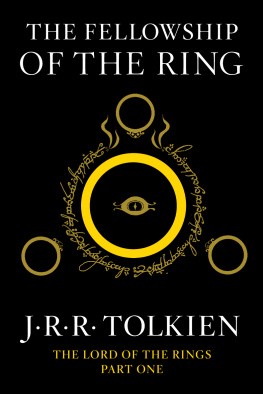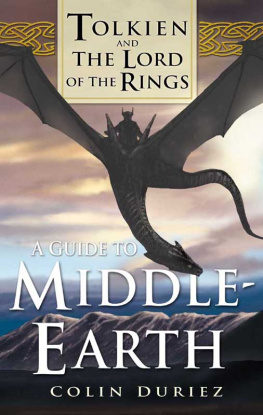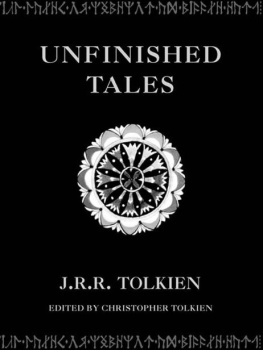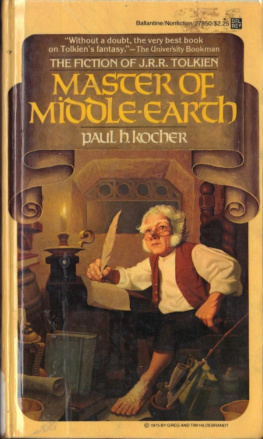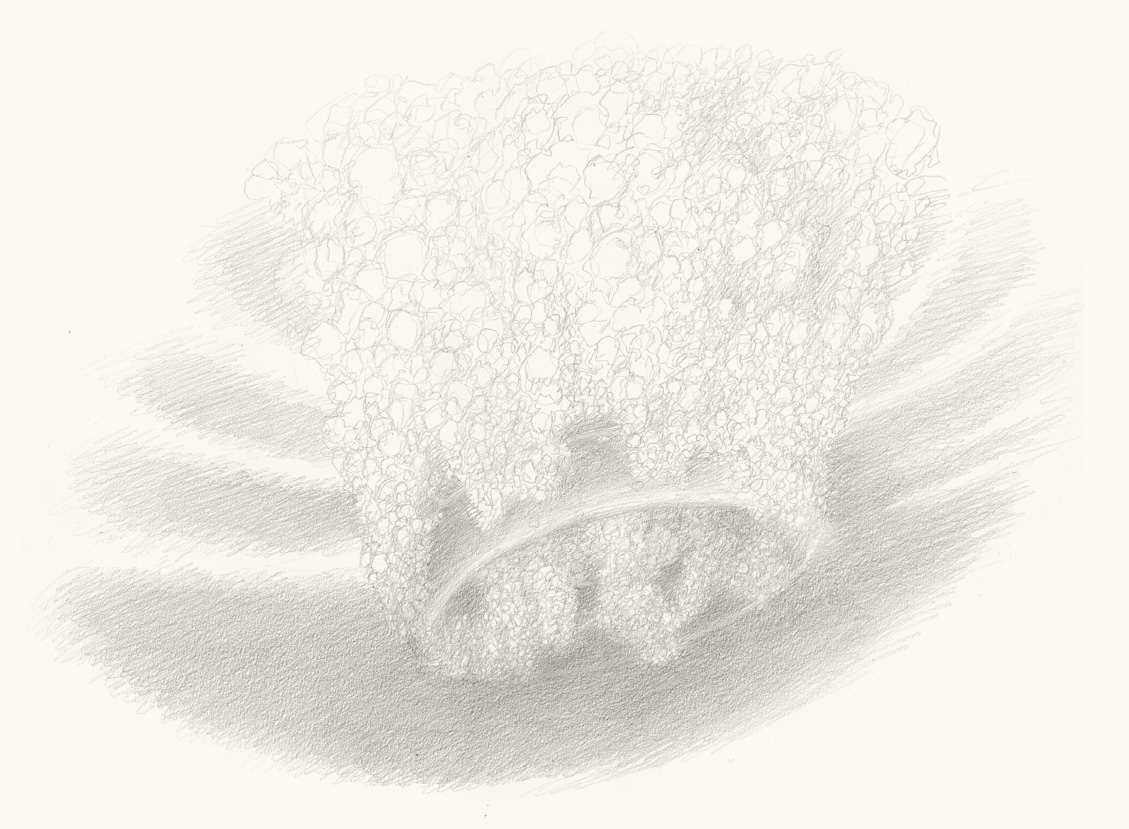Australia
HarperCollins Publishers Australia Pty. Ltd.
Level 13, 201 Elizabeth Street
Sydney, NSW 2000, Australia
www.harpercollins.com.au
Canada
HarperCollins Canada
Bay Adelaide Centre, East Tower
22 Adelaide Street West, 41st Floor
Toronto, Ontario, M5H 4E3
www.harpercollins.ca
India
HarperCollins India
A75, Sector 57
Noida, Uttar Pradesh 201 301, India
www.harpercollins.co.in
New Zealand
HarperCollins Publishers New Zealand
Unit D1, 63 Apollo Drive
Rosedale 0632
Auckland, New Zealand
www.harpercollins.co.nz
United Kingdom
HarperCollins Publishers Ltd.
1 London Bridge Street
London SE1 9GF, UK
www.harpercollins.co.uk
United States
HarperCollins Publishers Inc.
195 Broadway
New York, NY 10007
www.harpercollins.com
As is always the case when closely studying the writings of J.R.R. Tolkien, one is unavoidably reminded that here is an author who was not just gifted with an extraordinary imagination, but who was also a learned academic who was able to bring to his literary creativity (or, as Tolkien would prefer to call it, sub-creativity) the rigour and scholarly discipline of a philologist and a student of the rich worlds of myth, legend and folk-tale.
Since the majority of the published texts from which this book has been assembled were the product of Christopher Tolkiens almost lifelong role of understanding, curating and ordering the Tolkien legendarium, it is also a reminder of Christophers unique talent as an assiduous editor: blessed as he was with a deft and elegant writing style that is his own but which perfectly complements that of his father.
These two Tolkien, father and son stand first and centre as the onlie begetter and amanuensis of the tales collected in this volume. Nevertheless, there are a number of others who must also be acknowledged for their generous assistance.
I am deeply indebted to the Directors of the Tolkien Estate and to Christopher Tolkiens estate, not just for giving their approval to this project, but also for their positivity and their active involvement in the form of detailed and constructive comments that significantly helped with the books development from concept to finished volume. During the books journey to press, the Tolkien family, Trustees and the wider Tolkien community lost Priscilla Tolkien, the last of the Professors children. She was a passionate advocate for her fathers work and an untiring friend to those who journeyed in Middle-earth, which is why this volume is fondly dedicated to her memory.
At HarperCollins, appreciation and gratitude go to David Brawn, Publisher of Estates, for suggesting this project and for trusting me to accomplish it; to Hannah Stamp, Editorial and Pub Ops Executive, for her attentive assistance and eye for detail; Designer Terence Caven, whose sympathetic and elegant layouts belie the many versions we went through to get here; and Production Manager Simon Moore, for helping us all to work against the clock and get these books printed and delivered to every corner of the world at a time when such logistics are proving more complicated than ever.
This is at least the twelfth project (books and calendars) on which I have been fortunate to work with HarperCollins Publishing Director for Tolkien, Chris Smith, as my editor. As ever, Chris has been a paragon of patience and, most importantly, an ever-supportive dispenser of wise, calming and encouraging words to the extent that the resulting book is truly as much his as it is mine.
Although Alan Lee and I have been friends for over twenty years, weve never previously had the opportunity to collaborate on a project, so The Fall of Nmenor is a special milestone and, as always with Alans masterly work, I am in awe of the beauty and dynamism of the visions of Middle-earth and Nmenor that are captured in his evocative new colour illustrations and the proliferation of pencil decorations found within these pages.
Final thanks go to my agent, Philip Patterson; and, for above-and-beyond loyalty, my long-suffering husband, David Weeks, who uncomplainingly shared many months of our joint life living through the tumultuous days of the Second Age of Middle-earth.
Brian Sibley
Only three of [Isildurs] people came ever back over the mountains after long wandering; and of these one was Ohtar his esquire, to whose keeping he had given the shards of the sword of Elendil.
Thus Narsil came in due time to the hand of Valandil, Isildurs heir, in Imladris; but the blade was broken and its light was extinguished, and it was not forged anew. And Master Elrond foretold that this would not be done until the Ruling Ring should be found again and Sauron should return; but the hope of Elves and Men was that these things might never come to pass.
Valandil took up his abode in Annminas, but his folk were diminished, and of the Nmenreans and of the Men of Eriador there remained now too few to people the land or to maintain all the places that Elendil had built; in Dagorlad, and in Mordor, and upon the Gladden Fields many had fallen. And it came to pass after the days of Erendur [TA 640-861], the seventh king that followed Valandil, that the Men of Westernesse, the Dnedain of the North, became divided into petty realms and lordships, and their foes devoured them one by one. Ever they dwindled with the years, until their glory passed, leaving only green mounds in the grass. At length naught was left of them but a strange people wandering secretly in the wild, and other men knew not their homes nor the purpose of their journeys, and save in Imladris, in the house of Elrond, their ancestry was forgotten. Yet the shards of the sword were cherished during many lives of Men by the heirs of Isildur; and their line, from father to son, remained unbroken.
In the south the realm of Gondor endured, and for a time its splendour grew, until it recalled the wealth and majesty of Nmenor ere it fell. High towers the people of Gondor built, and strong places, and havens of many ships; and the Winged Crown of the Kings of Men was held in awe by people of many lands and tongues. For many a year the White Tree grew before the Kings house in Minas Anor, the seed of that tree which Isildur brought out of the deeps of the sea from Nmenor; and the seed before that came from Avalln, and before that from Valinor in the Day before days when the world was young.
Yet at the last, in the wearing of the swift years of Middle-earth, Gondor waned, and the line of Meneldil son of Anrion failed. For the blood of the Nmenreans became much mingled with that of other men, and their power and wisdom was diminished, and their life-span was shortened, and the watch upon Mordor slumbered. And in the days of Telemnar [Ruled: TA 1634-36], the third and twentieth of the line of Meneldil, a plague came upon dark winds out of the east, and it smote the King and his children, and many of the people of Gondor perished. Then the forts on the borders of Mordor were deserted, and Minas Ithil was emptied of its people; and evil entered again into the Black Land secretly, and the ashes of Gorgoroth were stirred as by a cold wind, for dark shapes gathered there. It is said that these were indeed the lairi, whom Sauron called the Nazgl, the Nine Ringwraiths that had long remained hidden, but returned now to prepare the ways of their Master, for he had begun to grow again.


